I’m bent at the waist in gag stance for all the crew to see. The sensory assault is so horrid it’s crippling. My eyes water and my gut heaves as I endure my first whiff of wild pelican.
The odor is worse than rancid elk meat covered in flies, festering in a grizzly bear trap on the hottest summer day. I never thought I would smell something worse, but pelicans are worse. Way worse.
“It’s very gross. Oh, it’s horrible,” says Dan Seymour, first-time pelican bander. “Absolutely horrible. You don’t know what you’re getting into until you get up here.”
I’m in this smelly place to cover a story of conflict centered around a protected bird that’s eating a declining native fish. If I’m any good at my job, I’m going to have to move past the stench, which is a combination of wet feathers, labor and delivery, fecal matter and regurgitated fish.
“The smell definitely rings your bell for sure at first,” Seymour says.
A mask enters my facedown line of sight. I put it on and straighten, I’m still gagging, but at least no one can see me doing it behind the mask. I find my camera pack and get on with the day. Gagging all along the way.
“We’re stepping not only on dirt, but years and years of grossness,” Seymour says. “Definitely wear boots. You are not going to want to come out here in flip flops.”
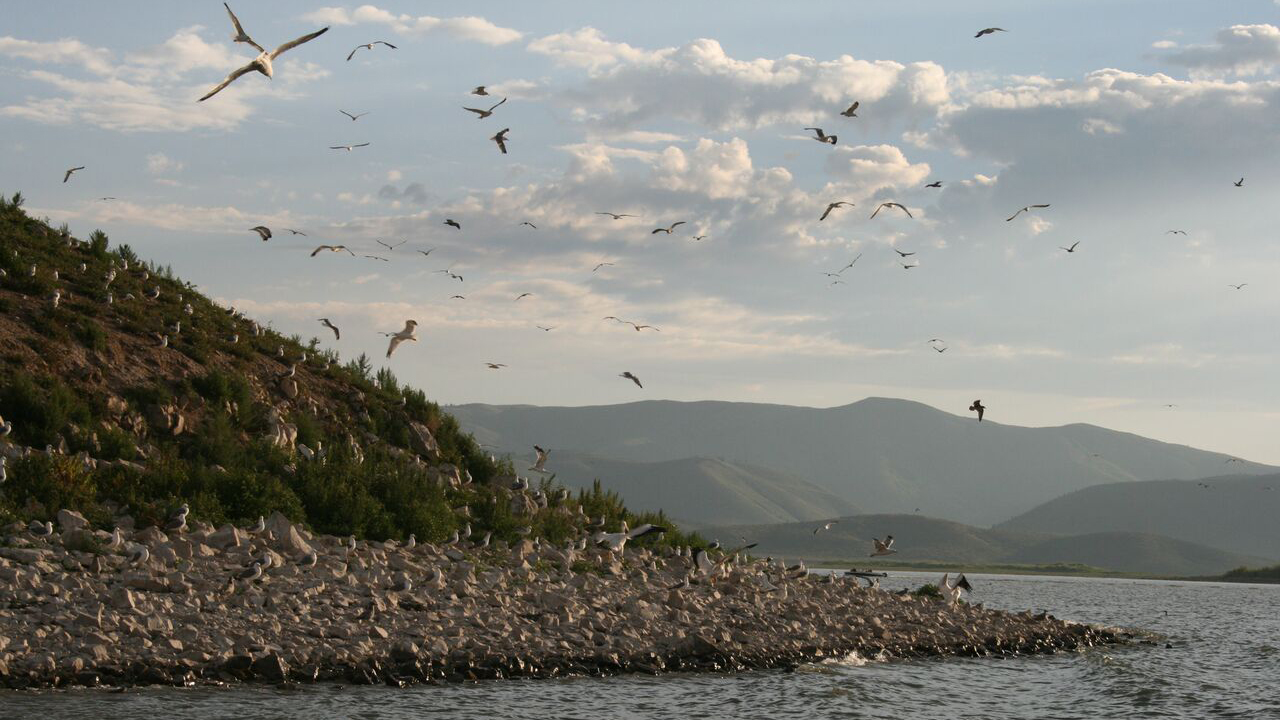
We’re on Gull Island in Blackfoot Reservoir. It’s one of three pelican nesting colonies in Idaho. The others are at Island Park Reservoir and Minidoka National Wildlife Refuge. The several hundred pelicans nesting on Gull Island don’t stay on the island so Idaho Department of Fish and Game bands them to find out where they go. That’s why there’s a corral of orange fencing set up in the dirt and boats are herding pelican chicks out of the water and into the net.
“I’ve never wrestled a pelican in my life,” Seymour says. “As long as you get the wings, I think you’re OK. If you don’t get the wings, they will beat you up.”
Seymour and a dozen other amateur wranglers are grabbing pelicans by the beak and quickly tucking their wings under their arm while the birds are tagged and banded. The whole process takes less than two minutes per bird once the beak is in hand. It’s getting the beak in hand that holds up the show.
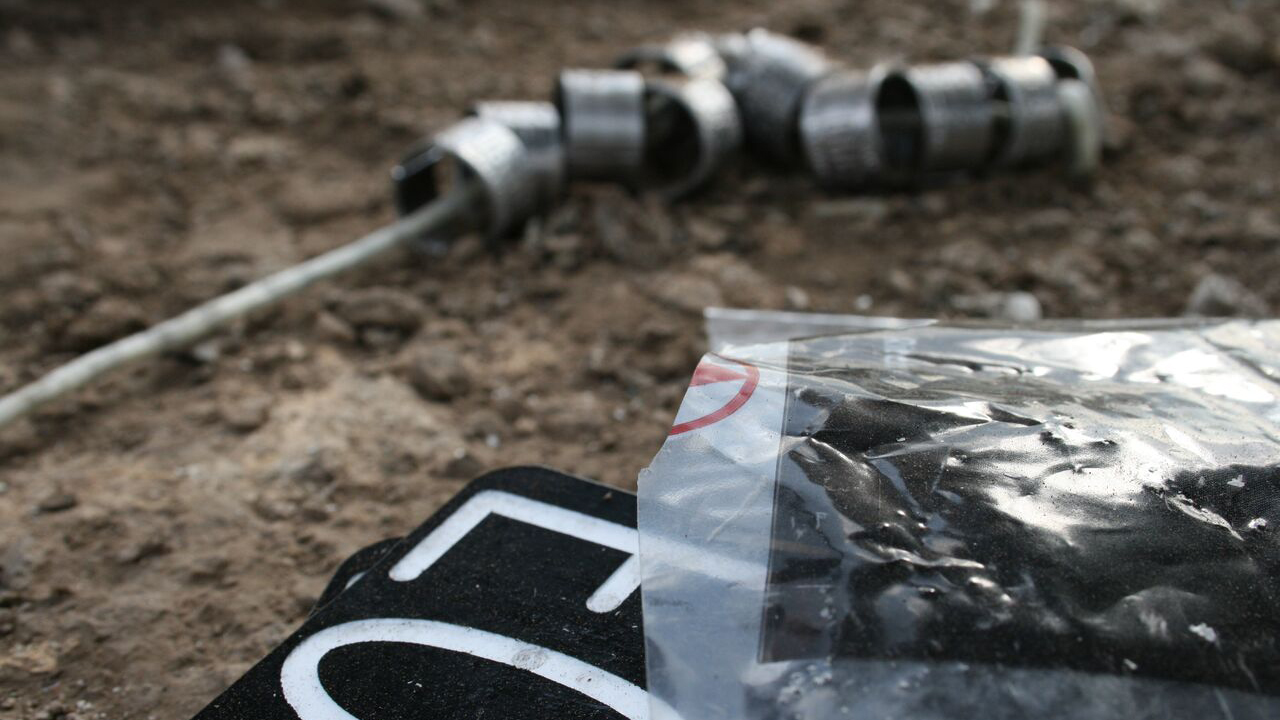
“You can’t be hesitant. No. Absolutely not. They will gang up on you,” Seymour says. “Go for the beak first and once you got it, grab them and go for it, but watch out for their buddies because they’ll get you.”
The pelicans are only a few months old, but they’re still close to the adult size of 20 pounds. They just can’t fly yet. They pile on top of each other like sheep that won’t separate. They snap their beaked pouches in defense, but they still end up tucked under an arm.
The department started banding pelicans in 2007, marking 300 annually. The birds come to Idaho to nest. They leave the island at the end of the summer for places as far away as Kansas and Canada.
While nesting, each bird forages on five pounds of fish daily, including Yellowstone cutthroat trout. Pelicans can eat up to 70 percent of the trout in area streams during nesting season. Hundreds of trout tags end up on Gull Island in pelican nests.
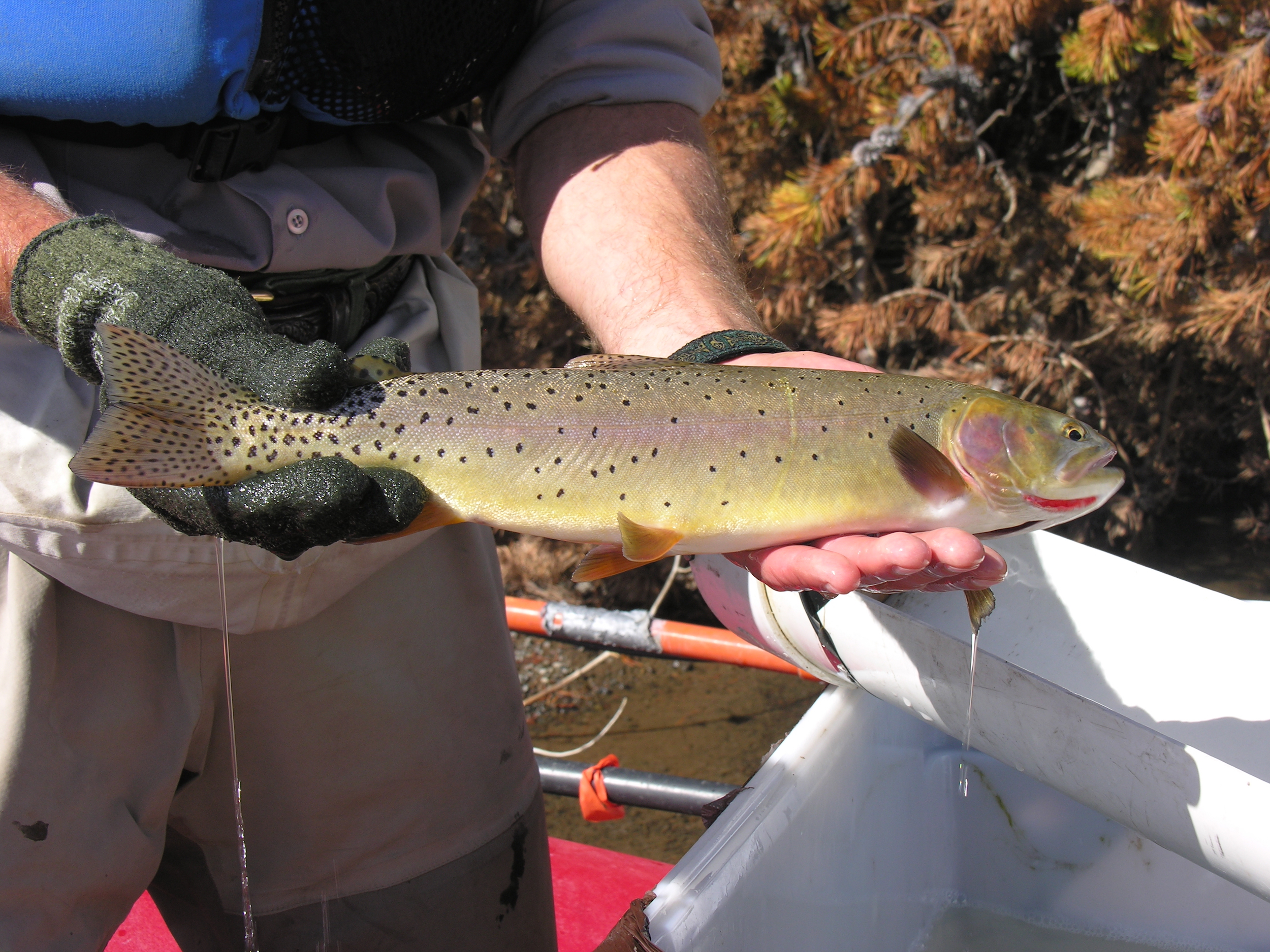
Yellowstone cutthroat trout populations are on the decline, but the fish is not officially protected. Pelicans are protected under the Migratory Bird Treaty Act so Idaho Department of Fish and Game needs a federal permit to take action.
“Whenever you have one species impacting another, it’s always a balancing act,” says Colleen Moulton, Idaho Department of Fish and Game avian ecologist. “You try to figure out what the best balance is to make sure you are preserving both species and making sure one isn’t having too much of an impact on the other.”
The department limits the island to 700 breeding birds. It runs flagging and fencing along sections of the island to reduce the size of the protected nesting area. The department can also destroy 600 nests in the spring and kill up to 75 adults annually. Those limits are in place because the agency can’t compromise another colony somewhere else by drastically reducing nesters eating too many trout at Blackfoot Reservoir.
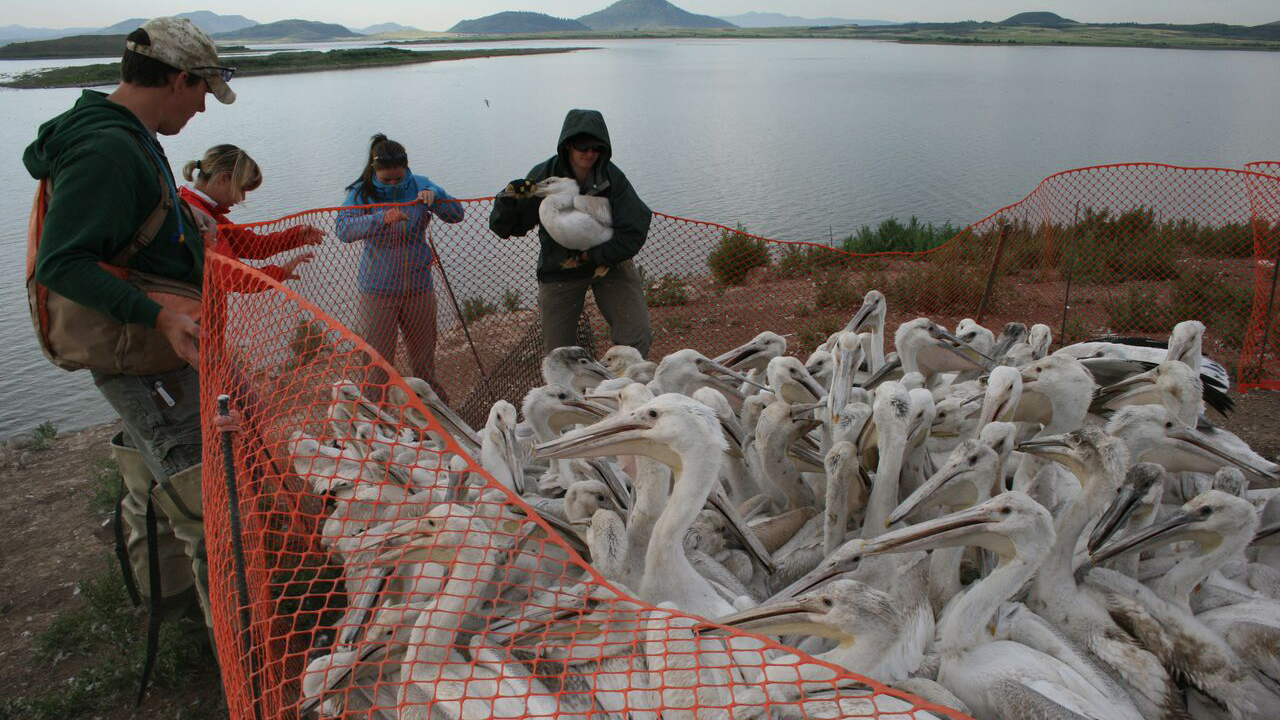
Less lethal measures are also used. A wall tent is raised in the spring adding constant human presence. Two temporary employees work out of the tent hazing birds that target spawning trout. They fire cracker shells and pyrotechnics multiple times daily.
“When we just hazed, they flew right next to us and got comfortable,” says David Teuscher, Idaho Department of Fish and Game regional fisheries manager. “Now that we’re mixing lethal and non-lethal, they’re skittish and they’re avoiding us.”
The combination of methods is working. Nesting limits are in check this year. Hazed birds don’t nest, but they still eat. The trout haven’t rebounded. Predation is only part of the problem. Low water has an impact too, but predation is still taking the largest toll. Only 204 spawning cutthroat made it up Blackfoot River in 2016. More than 1,800 were counted in 2013.
“It’s going to take several years of meeting pelican objectives before we have a balance that will work with cutthroat trout objectives,” Teuscher says. “It takes two full generations for the population to grow. That’s a decade or more in fish terms.”
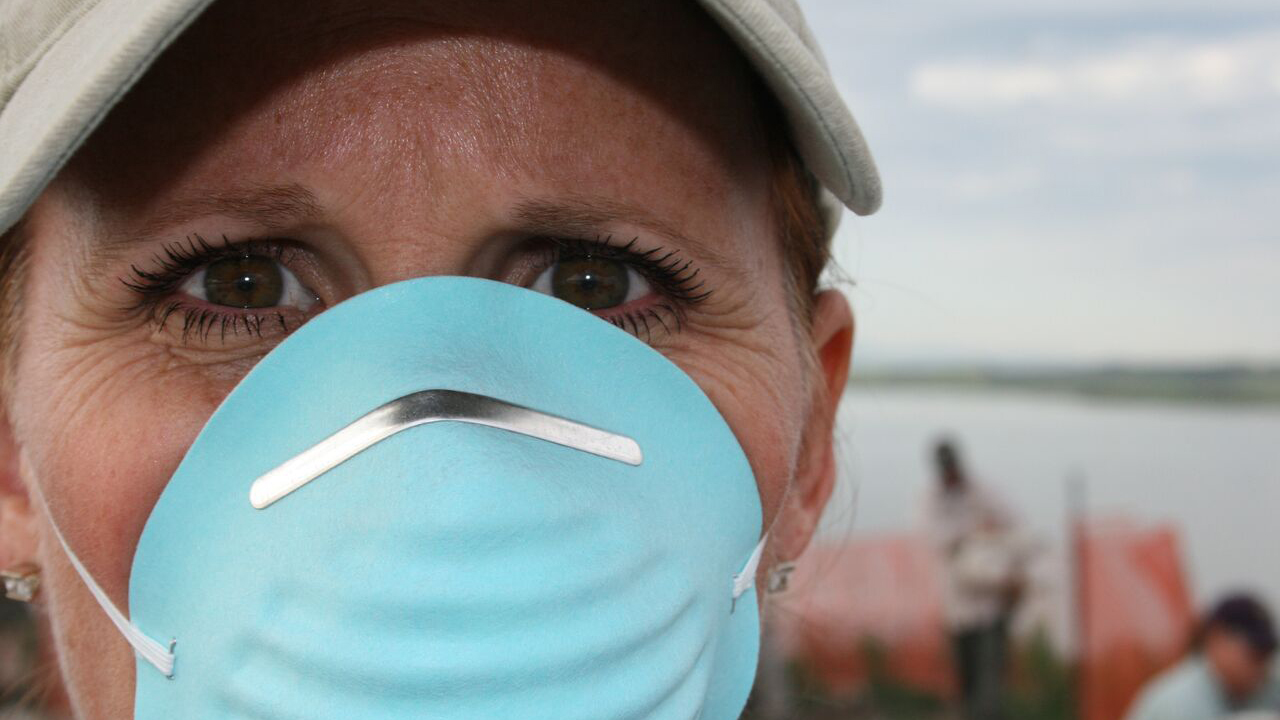
Monitoring what’s in the water and in the air takes time and a solid stomach. Capturing 300 pelicans in one day is a disgusting endeavor. We are filthy and our sense of smell is overloaded. Stress causes pelicans to throw up. That adds to the challenging conditions when bird beaks are in human hands and those beaks are full of puke and pouch lice.
Definitely the toughest story I’ll shoot all summer, but two hours into the grab and tag, the handlers stop talking about the conditions and start taking notice. They notice which birds have blue eyes. They count how many birds have bites on their necks and they know which ones are easy grabs.
“It’s neat to see people get excited about handling these birds and see them up close and appreciate the size and coolness of these birds,” Moulton says. “Whenever you get your hands on birds and get to see them up close, it’s a good day in the field.”
Their good day is by far my stinkiest day yet.



We are really grateful for your blog post. You will find a lot of approaches after visiting your post. I was exactly searching for. Thanks for such post and please keep it up. Great work
I have not heard of one beneficual reason for not redusing their numbers more drastically ehat good are pelicans? Jack Parson